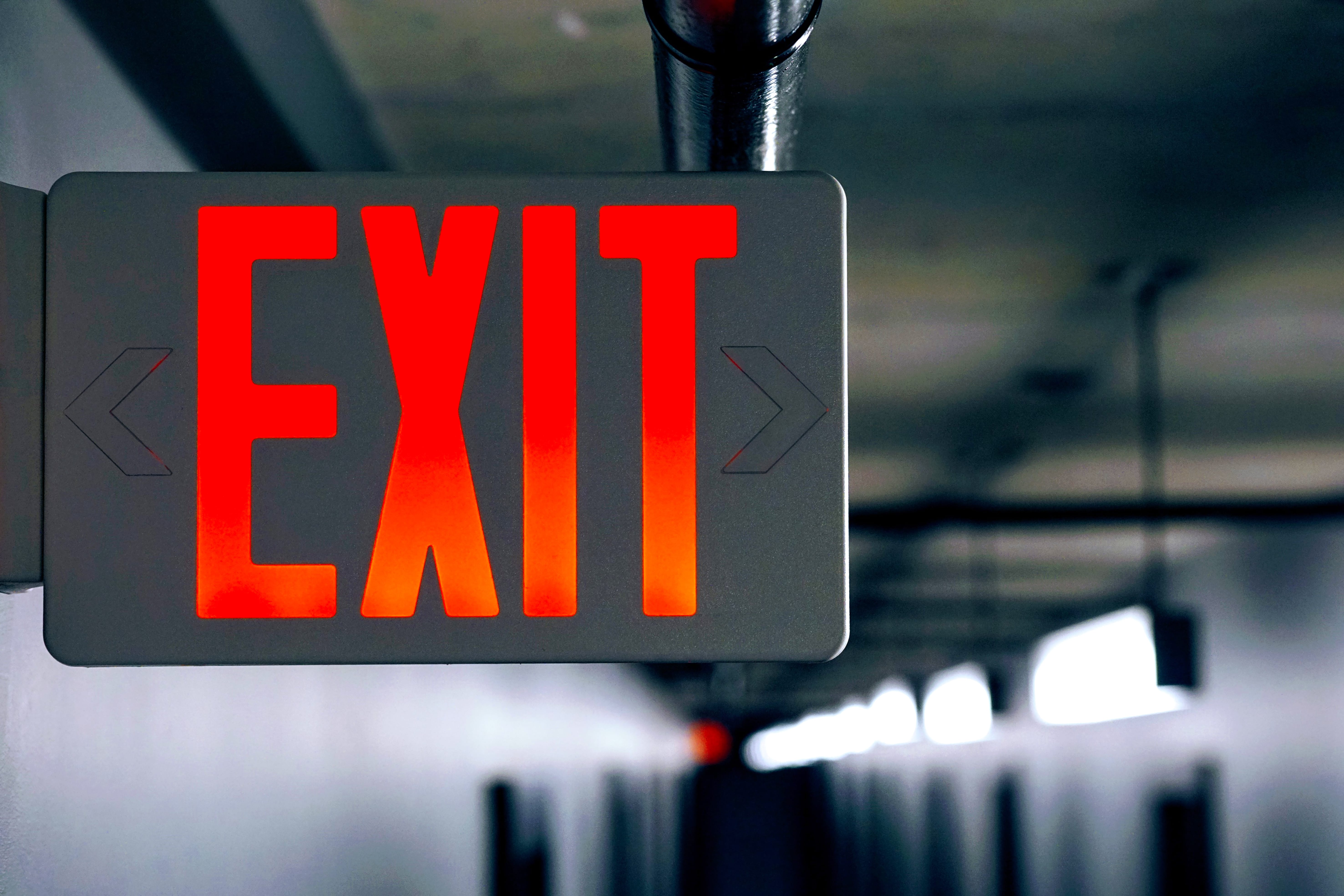
What Is Emergency Lighting?
Emergency Lighting is an integral part of a building balanced fire protection. Emergency Lights and Exit Signs are designed to illuminate and designate the path of egress so the building occupants can egress safely from a building in the event of power failure or other emergencies.
How Does It Work?
Emergency Lights
Most Emergency Lights are metal, or plastic enclosures with one or two mounted lamp heads and have batteries as a secondary power source. They are installed either by hardwiring to a building’s electrical supply, or they can also be installed with a 3-foot cord-and-plug connection. In the event of a power outage, the unit’s circuitry will transfer to battery power, thus illuminating the path of egress for a minimum of 90 minutes in most cases.
Today’s Emergency Lights offer a tremendous increase in light output using the latest LED (Light Emitting Diodes) technology. Older Emergency Lights utilize incandescent wedge-based lamps, sealed beam, and halogen lamps.
Exit Signs
Internally illuminated Exit Signs operate much the same as Emergency Lights. They can only be hardwired to a building’s electrical supply. Most Exit Signs come with a rechargeable battery backup. There are also AC Only Exit Signs, basically an Exit Sign with no battery power. You will find these connected to the building generator or UPS system. Exit Signs are designed to operate 24/7 on the building's electrical supply. In the event of a power failure ( like Emergency Lights), the unit‘s circuitry will transfer to battery power.
It is also worth noting that there are many varieties of exit signs. The most prominent light source today would be
- E.D.s
You will also still see Exit Signs with the following light sources in buildings even though they are no longer manufactured.
- Incandescent lamps (both AC and DC)
- Compact or linear fluorescent lamps
The following Exit Signs require no power.
- Tritium ( Self Luminous tubes- an isotope of hydrogen)
This Exit Sign is an Externally Lit Exit- It is required to be lit by five footcandles of Fluorescent lighting.
- Photo-Luminescent (naturally occurring minerals that are combined to produce a unique formulation of photo-luminescent crystals that emit energy in the form of light)
When Did It Start?
As far back as 1927, emergency lighting requirements can be traced to NFPA and its 1927 Building Exits Code:
The lighting source shall be arranged to assure continued illumination of exit-ways in cases of emergency caused by failure of the principal lighting of the building. Where the electric current is the source of the lighting of buildings used for public assembly or congregation, the emergency lighting shall be from a source independent of that for the general lighting or shall be controlled by an automatic device that will operate reliably to switch the circuit to an independent secondary source in the event of failure of the primary source of current.
Over the years, emergency lighting's general intent has essentially remained unchanged, regardless of innovations in technology and updates to building codes. What has changed is where it is required, what system components it requires, how to install it, and when to test it. The central governing bodies for Emergency Lighting are NFPA 101: Life Safety Code NFPA70: National Electric Code, International Building Code (IBC), and OSHA.
Be sure to catch Part 2, of this 2-Part Series, on “Who Needs Emergency Lighting?”
Source, http://www.csemag.com/single-article/fire-and-life-safety-emergency-lighting/924837a1eb33386283ffd5d151cf3701.html, retrieved 5/6/2021.





